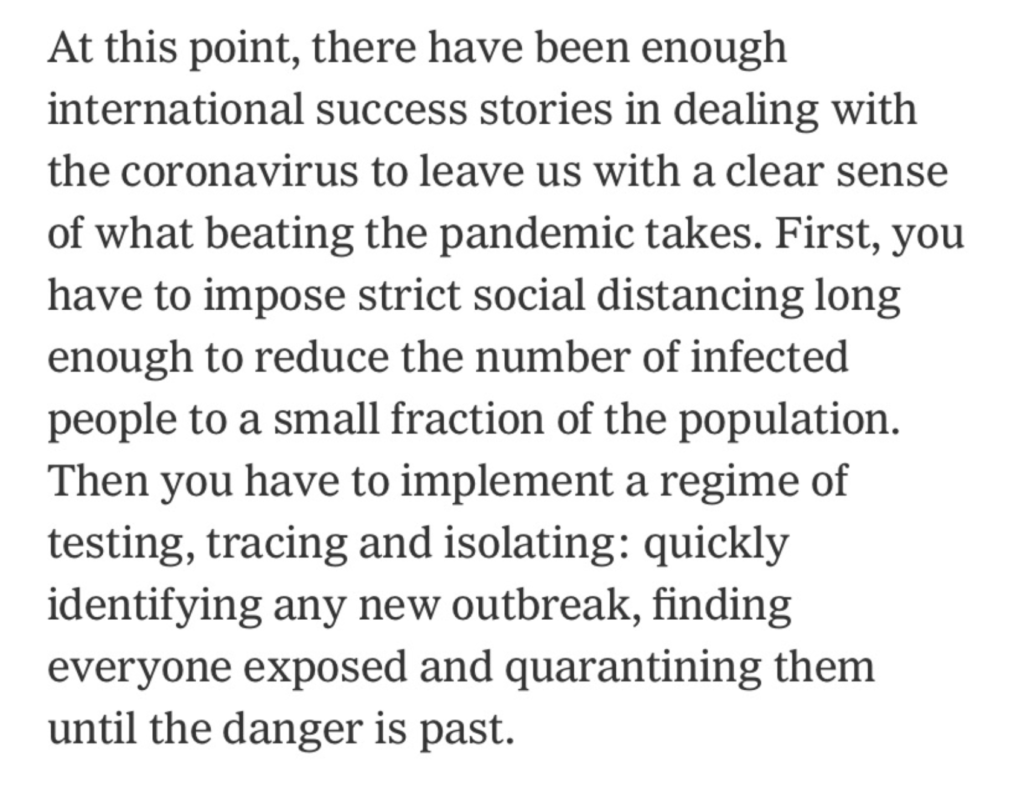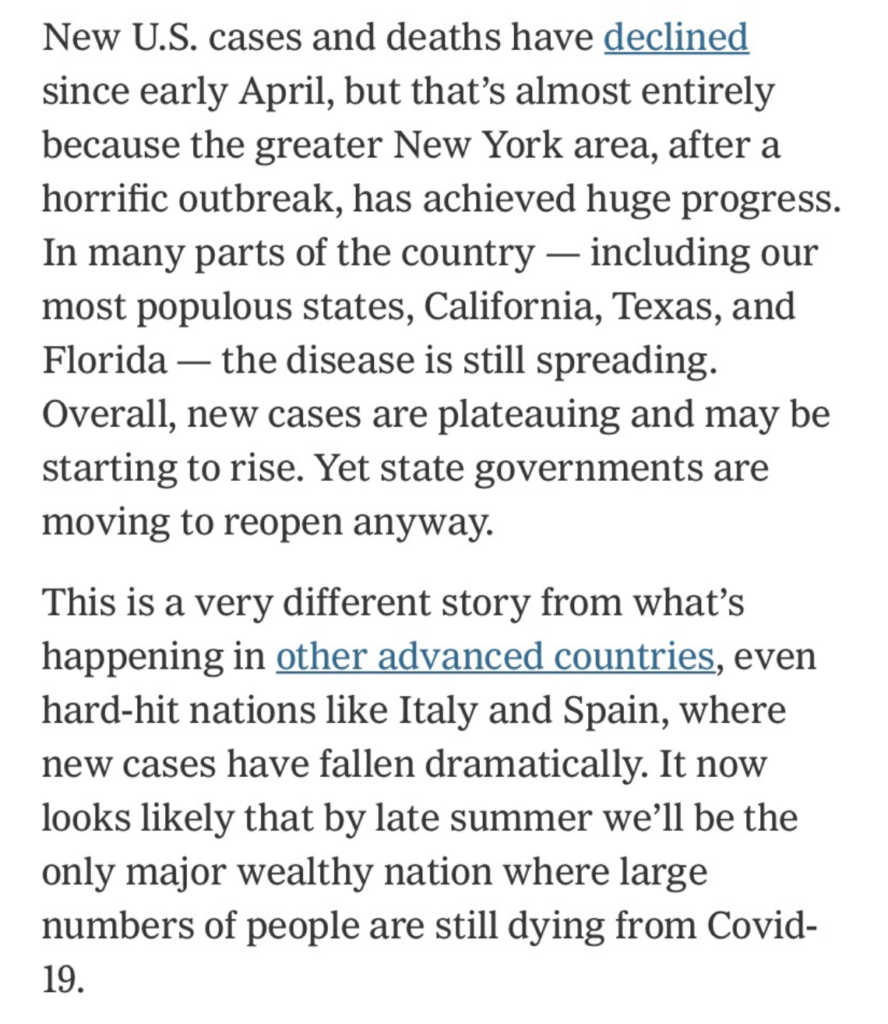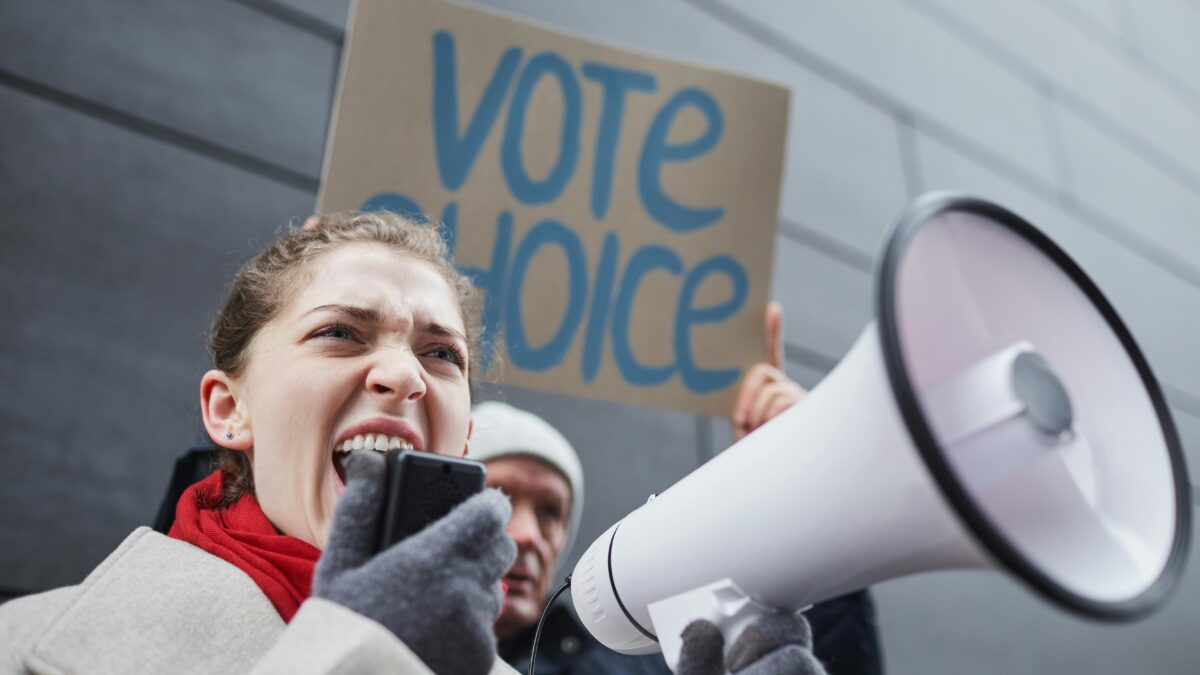
In a recent virtual town hall meeting called to address New York Times staffers’ vehement objections to the publication of an op-ed by Sen. Tom Cotton, advocating that federal troops be sent into certain American cities to help end riots, publisher A.G. Sulzberger said Cotton’s piece was “contemptuous” in tone and should not have been published. The Times’ editors subsequently added a note to Cotton’s op-ed purporting to identify factual deficiencies and adding that the piece’s tone was “needlessly harsh.” To demonstrate the Times’ commitment to these standards, the editor of the paper’s op-ed section, James Bennet, resigned under pressure.
As a public service, I’d like to call to the attention of New York Times editors and newsroom staff a column by Paul Krugman recently published in the op-ed section, “America Fails the Marshmallow Test: We lack the will to beat Covid-19,” that may not live up to these standards. The column, unsurprisingly, lectures with a contemptuous tone and blares serious factual issues. You know what to do.
What factual issues? Glad you asked; happy to help. First, this description of what other countries have done is way too oversimplified.

As Lyman Stone has tirelessly pointed out, many of the Asian countries with the best success record never resorted to lockdowns close to as draconian as ours. Their testing and tracing regimes were in large part substitutes for lockdowns, not complements.
Most of those countries were successful because they moved far earlier than did the hardest hit areas of the U.S. — mostly New York — and thus had far less community spread. By the time the United States — again, mostly New York — moved, it was too late to replicate the best records. It’s worth noting that this would be a perfectly legitimate criticism to levy against the U.S. and Trump, but it’s not the column Krugman wrote.
Next, Krugman avoids the temptation — good for him, really — to wax definitive about the virus spreading widely elsewhere. But even if he is right about it spreading more in California, Texas, and Florida, he doesn’t specify that those areas are starting from a base massively lower than New York.

Why does that matter? Because Krugman uses the U.S. aggregate experience to judge the conduct of states where the base is far below the New York-inflated average, thus holding them to a standard above what they have actually experienced. Krugman doesn’t discuss the level at which those states are plateauing, perhaps because that level is pretty low.
You're currently seeing people say "Texas hospitalization are are hitting new highs the past 3 days!"
Yes, but also let's keep some perspective. It's not increasing anything like the accelerations we've seen in other places. pic.twitter.com/K42a3x8oLK
— PoliMath (@politicalmath) June 10, 2020
Krugman then compares the U.S. as a whole to harder-hit places such as Spain and Italy. Well, the part of the U.S. that most resembled those two countries — New York City — had similar decreases. And regions of the country that had lower incidence, by orders of magnitude, didn’t.
When you recognize the wildly disparate effects of COVID-19 in different areas of the U.S., this all seems pretty intuitive. Krugman’s column, however, doesn’t.
Moreover, Krugman doesn’t recognize that most areas of the world are all reopening more or less at similar paces, regardless of spread or ruling political party. This undercuts Krugman’s claim that the U.S. is uniquely weak-willed. Krugman should consider the possibility that there are simply limits on how long lockdowns can be imposed.
Finally, this column contains fewer nasty attacks on Republicans than the average Krugman column, but it still has enough to earn the “contemptuous tone” epithet. (In fact, here the concluding contempt is directed at the U.S. as a whole, not just the GOP. For Krugman, this represents progress.) As Jonathan Chait recently pointed out, Sulzberger’s “assumption that the page is normally a contempt-free zone might come as a surprise to many of its columnists and their readers.” For Krugman and his readers, the contempt is the point.
To be clear, I don’t think any of these tonal or factual concerns add up to a case that the column shouldn’t have been published. I’m glad it was. But this is the standard the New York Times set for itself, publicly, as of this week. Is the Times going to live up to it consistently?
Because here is a perspective that, from the reporting, does not seem to be widely expressed (even if privately felt) in the newsroom. I do not believe the New York Times is interested in imposing this standard consistently or have any intention of doing so.
Even if it does, I do not believe the Times is capable of recognizing those same flaws in work from a perspective that is more congenial to the political preferences of its staff, while being hypersensitive to them in pieces coming from alternative perspectives.
From Ben Smith’s recent piece, “Inside the Revolts Erupting in America’s Big Newsrooms,” it seems clear that a large number of the New York Times’ staff does not believe that seriously engaging with alternative perspectives contributes to discovery of the truth, because Trump conservative white male fascism. It’s beyond the scope of this piece to fully address the flaws of this consensus, but in brief: If this trend continues, the New York Times as an institution will have serious blind spots that will lead its journalism astray in innumerable ways.
This would be a perverse outcome for an effort designed to correct for the blind spots of the past (which the reporters quoted by Smith are correct about; they exist and distort). Is it too much to hope for better than exchanging one set of blind spots for another?
Don’t answer that.









